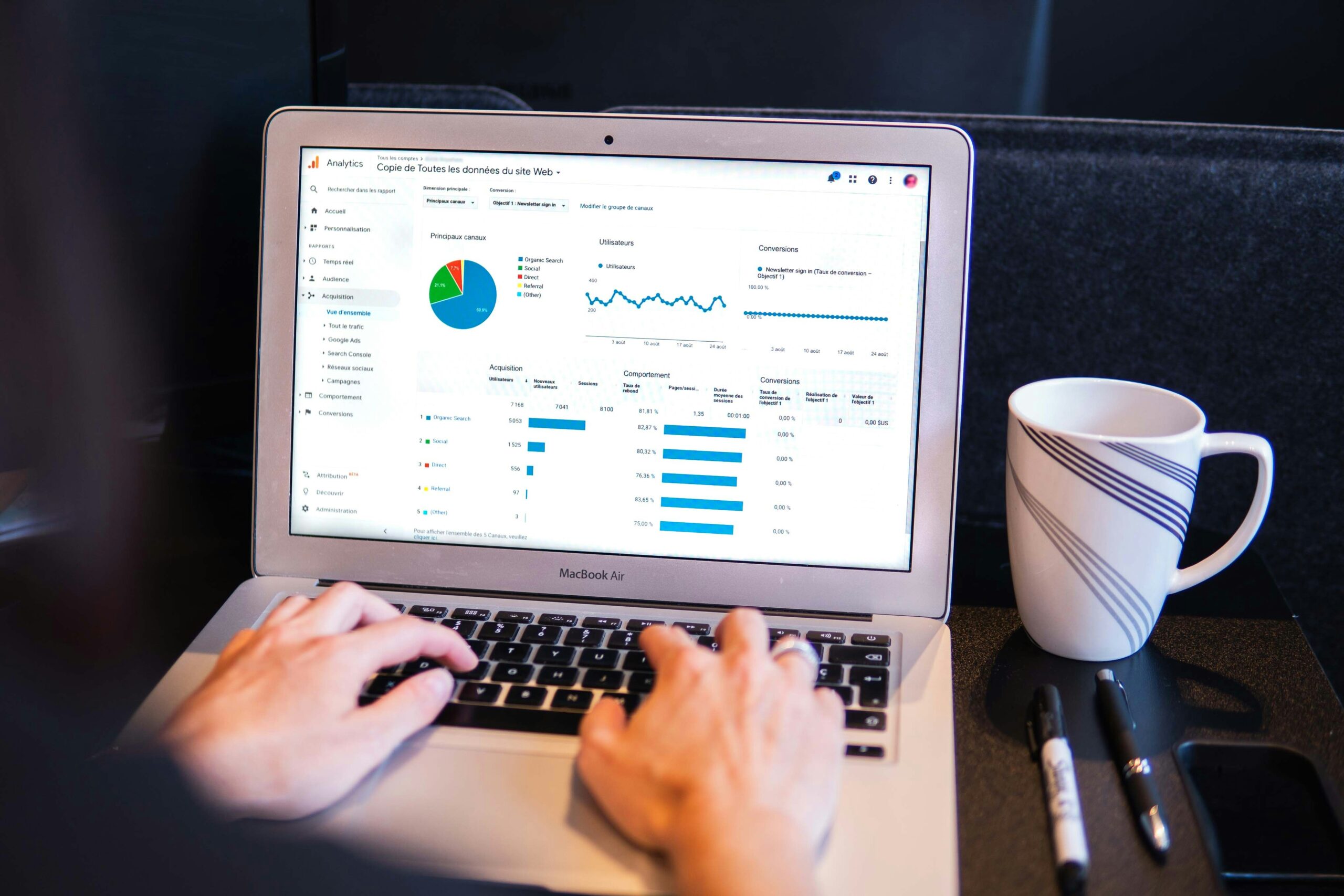Mastering your Google My Business listing is the cornerstone of a successful local SEO strategy. With search results becoming increasingly localized, businesses must optimize every profile element to stay competitive. From verifying your listing to refining descriptions and encouraging customer engagement, every detail counts. A strong GMB profile increases visibility on Google Maps and Search while attracting more qualified local leads. This guide walks you through proven steps to elevate your local online presence.
Key Takeaways
- Claim and verify your Google My Business listing to maintain control and accuracy.
- Optimize your business name, categories, and description with consistency and clarity.
- Use local keywords and highlight community involvement to increase geographic relevance.
- Respond to customer reviews and post updates regularly to boost engagement.
- Track analytics and continuously refine your strategy to maintain strong local rankings.
Maximize Your Google My Business Listing for Local SEO

Optimizing your Google My Business (GMB) listing plays a pivotal role in attracting local customers and boosting search visibility. From verifying your profile to selecting accurate service categories, each component impacts your local SEO. A well-maintained GMB listing increases trust, drives traffic, and contributes to your overall digital footprint.
Claim and Verify Your Google My Business Profile Effectively
The first step to successful local SEO is ensuring that your business has been properly claimed and verified. When you claim your profile, you gain the opportunity to manage how your business is depicted online. After verification, details such as your phone number, address, and business hours can be updated and optimized. This control provides you with the means to correct any discrepancies that might confuse potential customers or hurt your local ranking.
Optimize Your Business Name, Address, and Service Categories
It is crucial to use a format that reflects your actual business name. Often, small variations can negatively impact local search rankings. Consistency between your website, listings, and directories aids search engines in understanding your business’s true identity. Service categories must be precise to attract the right audience. Clearly defined categories help Google quickly match your business with the search queries you want to target.
Add Accurate and Compelling Business Descriptions for Visibility
A well-crafted business description should succinctly detail your offerings, mission, and unique value proposition. Utilize keywords naturally within the description without overstuffing, as this helps in driving relevant local traffic. A compelling narrative that highlights what sets your business apart makes a strong first impression on potential customers.
Choose the Right Business Attributes to Attract Local Customers
Select attributes that best represent your services and the values that drive your business. Attributes like “Women-led,” “Wheelchair accessible,” or “Outdoor seating” signal tailored advantages to niche customer groups, enhancing your local appeal and increasing click-through rates.
Regularly Update Your Hours and Business Operations for Relevance
Operating hours can change seasonally or due to special events. Ensuring that your hours are up-to-date helps manage customer expectations and avoids negative reviews. Maintaining current details signals an active operation, which positively influences local search ranking factors.
Utilize Customer Reviews to Enhance Your Credibility Online
Customer reviews serve as social proof and boost your listing’s visibility. Engage with reviewers by thanking them for their feedback and addressing any concerns. Positive customer interactions create a trustworthy image of your business while also providing additional content that Google indexes, thereby strengthening your local SEO.
Enhance Local Search Visibility With Strategic Content

To stand out in local search results, your business must publish content that speaks directly to the needs of your local audience. This involves using localized keywords, sharing news about community events, and providing insights reflecting your neighborhood presence. Strategic content builds trust and helps Google connect your business to relevant local search queries.
Create Engaging Posts That Highlight Your Services and Offers
Frequent posts on your Google My Business profile can boost engagement and influence local SEO. Share updates about new services, special promotions, or behind-the-scenes looks at your business. This not only gives customers a reason to follow your listing but also signals to Google that your business is active and offering fresh content. Use high-quality images and crisp headlines to capture attention quickly.
Use Local Keywords Naturally in Your Business Description
Incorporating local keywords is key for any content strategy aimed at local search improvement. Integrate terms that relate directly to the area in which your business operates. For example, if your business serves Miami, including phrases like “Miami local services” or “best Miami offerings” naturally in your description can increase relevance. Techniques such as location-based targeting help search engines quickly identify your business’s geographical area, improving your chances of appearing in localized searches.
Utilize Photos and Videos to Enrich Your Profile’s Appeal
Visual content, particularly photos and videos that showcase your business activities, adds vibrancy to your Google My Business listing. Regularly updating these visuals helps capture current promotional periods or highlight new facets of the business. Authentic visuals build trust and provide a more tangible connection for potential customers, enhancing click-through rates and driving engagement.
Build Authority Through Consistent Customer Engagement

Engaging consistently with your customers enhances your business’s credibility and helps foster trust in the local community. Responding to reviews, encouraging user-generated content, and providing timely updates all contribute to a positive online presence. This engagement builds loyalty while signaling to Google that your business is active and trustworthy.
Respond Timely to Customer Reviews for Positive Relationships
Taking the time to answer reviews and thank customers for their positive feedback nourishes customer relationships. A business that communicates openly builds a sense of community and trust. Even responding to negative reviews with a willingness to make things right can transform a potential setback into a showcase of excellent customer service.
Use Posts to Share News, Updates, and Special Offers
Sharing relevant updates, industry news, and exclusive offers through your GMB posts keeps your audience informed and excited about your business. Regularly posting fresh content gives customers a reason to remain connected and engaged with your listing. Additionally, frequent posts help signal to search engines that your business remains active and reliable, which can further boost your local SEO performance.
Encourage Customer Interactions in Your Google My Business Listing
Prompting customers to leave reviews, ask questions, and share feedback invites community-driven content. Such interactions serve as social proof, reinforcing that your business provides valuable products or services. Tools like review request emails or reminders after a service can help encourage this behavior. The more interaction your listing garners, the more robust its presence becomes in local search results.
Monitor Engagement Metrics to Refine Your Strategy
Regular analysis of key performance indicators, such as review accumulation, post engagement, and Q&A interactions, is critical. These metrics provide insight into what is working and where adjustments are needed. Using tools such as Google Analytics and Google My Business Insights can help you understand your customer behavior better and refine your engagement strategy accordingly.
Leverage Backlinks for Improved SEO Performance

Building a strong backlink profile supports your local SEO by increasing your business’s domain authority and driving referral traffic. Backlinks from trusted local sources like blogs, directories, and community partners reinforce your credibility in search results. Prioritize local relevance and quality over quantity to ensure meaningful SEO benefits.
Identify Local Websites for Valuable Backlink Opportunities
Start by researching well-established local websites and directories relevant to your industry. Use tools like Moz or Ahrefs to identify sites that have strong domain authority and a local focus. These sites often welcome collaborative partnerships where you can contribute content or be part of local listings
Create Shareable Content That Encourages External Linking
Producing high-quality, shareable content such as infographics, detailed guides, or case studies can naturally attract backlinks from local websites. Content that resonates with the local audience often gets shared on community blogs and news sites. Invest in well-researched articles that highlight local statistics, interviews with local experts, or success stories, encouraging natural link-building.
Prioritize High-Quality Over Quantity in Backlink Strategies
Not all backlinks are created equal. Focus on earning links from authoritative, reputable local sources rather than accumulating a high quantity of low-quality links. Quality backlinks bring real value by enhancing your domain authority and directly influencing your local search rankings. Tools like Google Search Console can help you monitor your backlink profile and ensure its steady growth with reputable sources.
Use Citation Consistency to Boost Your Presence
Alongside backlinks, maintaining consistent citations across local directories and platforms reinforces search engine trust. Ensure that every citation has your exact business name, address, and phone number. Consistent citations and high-quality backlinks together form the foundation for robust local SEO.
Utilize Analytics to Measure Your Local SEO Success

When implementing local SEO strategies, it is essential to have a concrete method for tracking and measuring performance. Analytics play a pivotal role in understanding your Google My Business listing’s success and overall local visibility. By monitoring key performance indicators (KPIs), businesses can draw actionable insights and further refine their strategies. Tools like Google Analytics, Google My Business Insights, and third-party SEO platforms allow you to track metrics such as website traffic, click-through rates, and customer engagement.
Analyzing customer actions helps you understand which aspects of your local listing are working effectively and which areas need reinforcement. For example, if your business description and posts receive a high click rate but customer interactions are low, it might indicate the need for more engaging calls to action. Such data-driven insights empower businesses to fine-tune their local SEO strategies and ensure optimal performance over time.
Track Key Performance Indicators in Google My Business
Establishing a baseline with KPIs like total views, customer actions, and search queries is fundamental. Monitor these metrics over time to understand seasonal trends and identify peak engagement periods. Regular tracking allows you to set realistic benchmarks and adjust your strategies to meet or surpass these targets.
Analyze Customer Actions to Understand Preferences
Customer actions, including website visits from your listing, booking requests, or calls, provide invaluable feedback on how customers interact with your business online. Reviewing these interactions helps to pinpoint areas where your profile attracts the most attention, enabling you to refine your content and engagement strategies. Increased actions can validate that your local SEO strategies are effective and resonate with your target audience.
Use Insights for Optimizing Future Marketing Efforts
By systematically analyzing the data, businesses can identify which tactics drive the best results. Insights derived from customer behavior, such as peak inquiry times or popular service categories, inform future marketing strategies. Experiment with variations in posts, descriptions, and offers, and measure differences in performance. Over time, this iterative process leads to a more optimized profile that consistently delivers higher conversion rates.
Monitor Local Search Rankings for Continuous Improvement
Both on-page factors and external engagement directly impact local search visibility. Monitoring your search rankings regularly ensures that any fluctuations are quickly addressed. Integrating ranking data with user behavior helps you pinpoint the precise elements that need adjustment—be it new posts, updated reviews, or refined business information.
Adjust Strategies Based on Trend Analysis and Metrics
Data trends can reveal emerging opportunities or highlight areas where customer needs are shifting. Consistently revisiting your analytics allows for agile adjustments to your local SEO strategy. A proactive approach to refining your business profile based on measurable trends ensures that your strategies stay relevant and effective.
Leverage Customer Demographics for Targeted Outreach
Analytics also provide insights into customer demographics such as age, location, and interests. Use this information to tailor highly targeted marketing campaigns. When your profile reflects the specific needs and behaviors of your local audience, engagement increases, and local SEO performance improves.
Stay Updated on Local SEO Trends and Best Practices

Tracking and interpreting analytics is essential to understanding the effectiveness of your local SEO efforts. You can refine your strategy and target local audiences more effectively by monitoring performance indicators such as clicks, impressions, and user actions. Insights gained from analytics help optimize your content and engagement strategies for stronger long-term results.
Monitor Google My Business Insights for Customer Behavior
Google My Business provides data on how users find and interact with your listing. Key insights include how many people view your profile, where they found you, and their actions. Use this data to determine which elements—posts, reviews, or photos—drive the most engagement. Monitoring these metrics allows for adjustments that strengthen local visibility.
Track Website Traffic From Local Search Queries
Use tools like Google Analytics and Search Console to segment your traffic by location and source. Monitor how many users land on your site from local search results and what pages they visit. Identifying high-performing pages and queries lets you double down on compelling content. This targeting approach ensures you stay aligned with user intent and location relevance.
Adjust SEO Tactics Based on Performance Trends
Analyze patterns over time to evaluate what’s working and what needs improvement. For example, a spike in search views following a new post or review may indicate valuable content themes. On the flip side, declining engagement might signal the need to refresh or restructure key elements. Use these insights to shape smarter, data-informed SEO strategies.
Frequently Asked Questions
How important is it to verify my Google My Business profile?
Verifying your Google My Business profile is fundamental because it establishes authenticity and allows you to manage and update your business information. A verified profile improves your local search rankings and increases trust among your customers. It is the first step in building a robust local SEO presence.
What are the best ways to create engaging local content?
Creating engaging local content involves naturally using localized keywords, sharing updates about community events, and making posts highlighting your unique services and offers. Consistency in posting and including high-quality visuals ensures your content resonates with the local audience. Moreover, integrating stories about community involvement can significantly boost local credibility and SEO performance.
How do customer reviews impact local SEO?
Customer reviews are a major ranking factor in local SEO. Positive reviews signal credibility and quality, prompting Google to rank your business higher. Additionally, timely responses to reviews demonstrate excellent customer service and engagement. This interaction not only builds trust with potential customers but also provides fresh, user-generated content that benefits your SEO.
What is the role of backlinks in local SEO?
Backlinks from reputable local sources serve as endorsements that increase your business’s authority in the eyes of search engines. Quality backlinks enhance your local search rankings and drive targeted traffic to your website. Collaborations, sponsorships, and community partnerships are practical ways to secure such backlinks while reinforcing your local business network.
How often should I update my Google My Business listing?
It is recommended to review and update your Google My Business listing at least once a month or whenever any important business information changes, such as operating hours, new services, or special promotions. Regular updates ensure that potential customers receive accurate information and that your listing remains active, which positively impacts your local SEO ranking.
Conclusion
Optimizing your Google My Business listing goes beyond filling in the basics—it’s about building a digital storefront that earns trust, visibility, and clicks. By focusing on strategic updates, local engagement, and consistent branding, you’ll establish stronger connections with nearby customers. Each interaction and update tells Google that your business is active, reliable, and locally relevant. Don’t just be found—be chosen. With the right approach, your GMB listing becomes a powerful driver of local growth.
